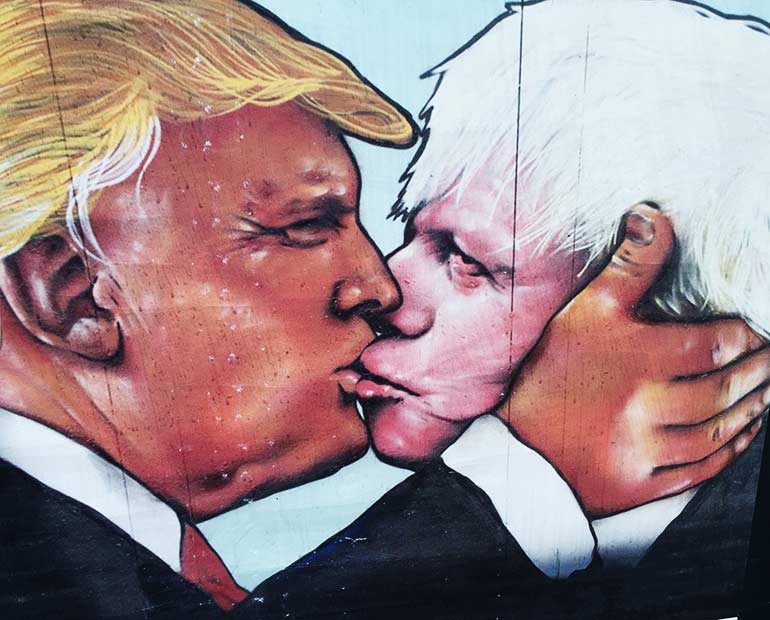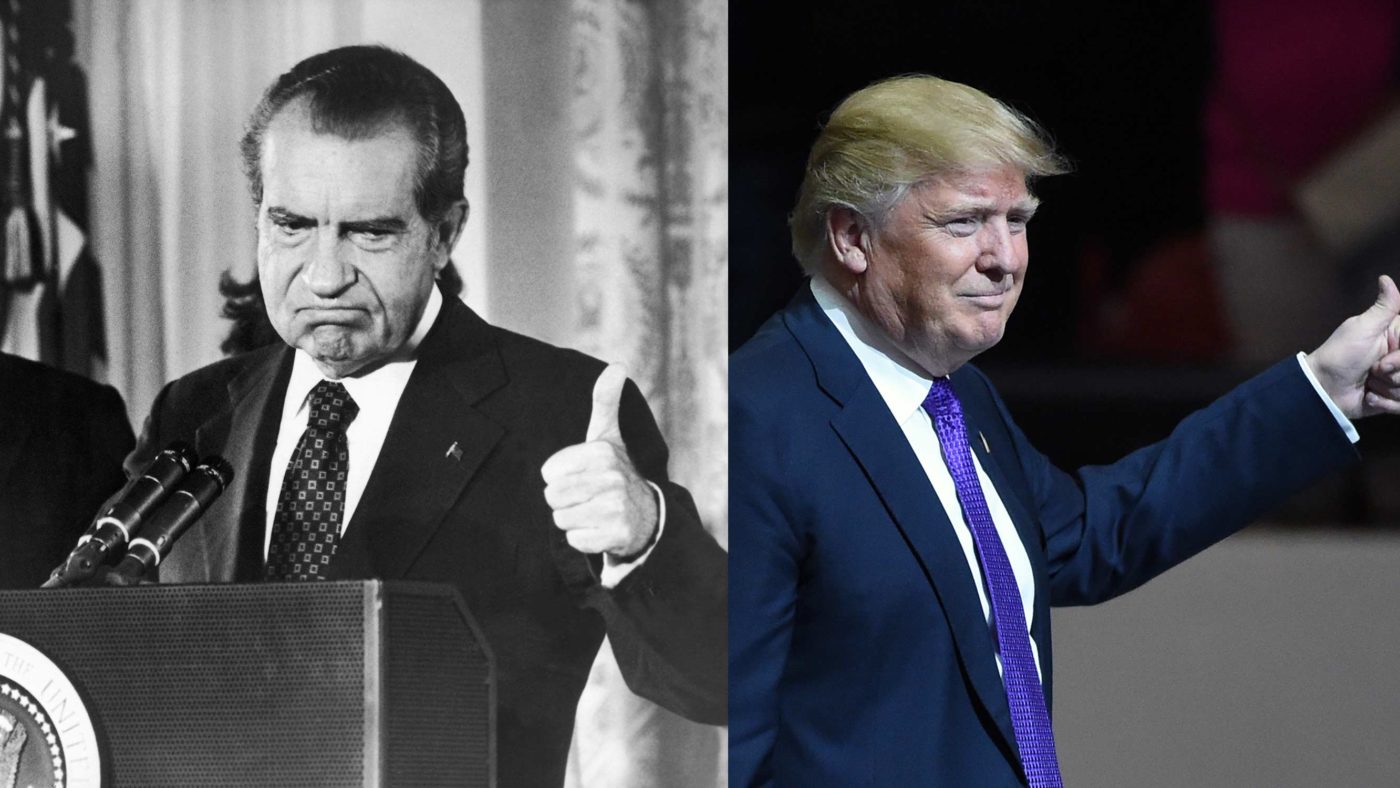If the polls this far out seem to favour Hillary Clinton, there’s still enough volatility in the numbers to make one pause and wonder. If something unusual does happen in the months leading up to November, then where might we be in the New Year? The answer, I suspect, is at the start of a new golden age of American art.
Let me explain. Hillary is, of course, a divisive figure – the fashion sense seemingly borrowed from a North Korean despot, the maniacal laugh that sounds like an industrial turbine suffering a touch of midwinter rust. But Trump is already producing a response that is deeper than mere politics. He generates in his critics an almost primal hostility.
So far, the cultural response has consisted of a few obvious and highly publicised stunts of little artistic merit. There was Illma Gore’s painting of a nude Trump, followed recently by a group of anarchic artists called INDECLINE who installed dummies of nude Donalds in American cities.
Neither offer anything deeper than other recent examples of shock art, such as a recent recreation of the famous Berlin Wall mural of Brezhnev kissing Honecker: The new version has Trump kissing Putin on a Vilnius wall.

It has been since copied here in the UK where visitors to Bristol can witness Trump jockeying tongues with our new Foreign Secretary.

Now just imagine what would happen if Trump actually became president. Actually, we don’t have to – because there is already a model for his combination of bruising personality disorder and gold-leaf paranoia, in the form of Richard Nixon.
Nixon still haunts American popular culture in a way like no other president. He almost single-handedly inspired a generation of writers, directors, musicians, and artists to achieve something that has arguably never been matched.
Cartoonists Ralph Steadman and Gerald Scarfe did their best work when trying to capture the foul essence of Nixon — Steadman’s most famous image, for Hunter S. Thompson’s Fear and Loathing on the Campaign Trail, even had Nixon fouling himself. Meanwhile, writers from Mailer to Vonnegut found Nixon to be their perfect muse; a gristly venomous abstraction of everything mean and divisive about human nature. On the death of Nixon, Thompson would write to Steadman:
“I beat him like a red-headed mule, & doing it made me happy. No winery or foppish eatery paid me extravagantly to do it — but I did it anyway — just for expenses & the pure love of flogging that perfectly monstrous bastard. He brought out the best in us, Ralph, all the way to his wretched illegal end — and I will miss him.”
Nixon inspired actors, too. In a recent Amazon Studios production, Nixon & Elvis, which attempts to recreate a notorious private meeting between the King of Rock and Roll and the King of Paranoia and Taping, Kevin Spacey gives one of his most memorable performances (although the film itself will, no doubt, be soon forgotten). Spacey visibly slackens in the role; his hunched shoulders belying the way the rest of him droops and sags in order to capture the President’s clumsy but loose physicality.
Nixon, it seems, has this affect on the men tasked with playing him. He is material they can work with: the kind of unsympathetic role that’s rarely found outside Shakespearean tragedies, where heroes come twisted in mind and body. Harry Shearer, who recently played Nixon for Sky Arts’ excellent Nixon’s The One, observed that “the flaws that made him a great comic character were really a mile deep”.
These flaws, of course, were not specific to Nixon. He did not so much define America as much as he grew organically out of its political culture. Nixon was merely a product of the system that saw the rise of Lyndon B. Johnson, whose example led Nixon to tape record his meetings in the White House. Alan J Pakula’s political thrillers of the 1970s were obviously Nixonian (All The President’s Men, obviously, but also The Parallax View and Klute), but they were also indicative of a broader political climate, in which heroes and anti-heroes blur.
Even Kennedy, the man Nixon believed “lacked the substance to go with his considerable style”, fits this pattern. James Ellroy writes so well about the world where “Jack Kennedy ogled women” and “bewitched, bothered, and bewildered” them with “baubles, bangles, beads” and “brilliant Boston beatitudes”‘. You can see this mood in Coppola’s paranoid masterpiece, The Conversation, but even in a film as open and epic as The Godfather there is a bleak menace ridden with political disquiet.
As much as anything, the Corleone saga hints vaguely about the shadowy side of Camelot. It is that view of contemporary politics that Philip Roth captured so well in his Nixon parody, Our Gang. There Nixon becomes “Tricky”, who at one point admits:
“Gentlemen, I am no newcomer to the ugly game of politics. I have seen all kinds of chicanery and deceit in my day — falsification, misquotation, distortion, embellishment, and, of course, outright suppression of the truth. Nor am I what you would call a babe-in-the-woods when it comes to the techniques of character assassination […] But, I must admit, never in my long career of dealing with falsehood have I come upon a lie so treacherous and Machiavellian as this one my enemies are trying to pass off about me… […] The Boy Scouts of America screaming to the TV cameras that Trick E. Dixon favours sexual intercourse. Favours fornication — between people!”
Every president reflects part of America back at itself – it will be the same with Clinton and Trump, whichever of them wins. But you can already see how a Trump victory in particular would spur artists to explore the power of celebrity and the insidious nature of marketing and spin, the nature of public and private ego, the role of shame in a post-shame society. The artists decrying him now might find, as Thompson did with Nixon, that a President Trump brings out the best in them. They might even end up similarly sorry to see him go.


